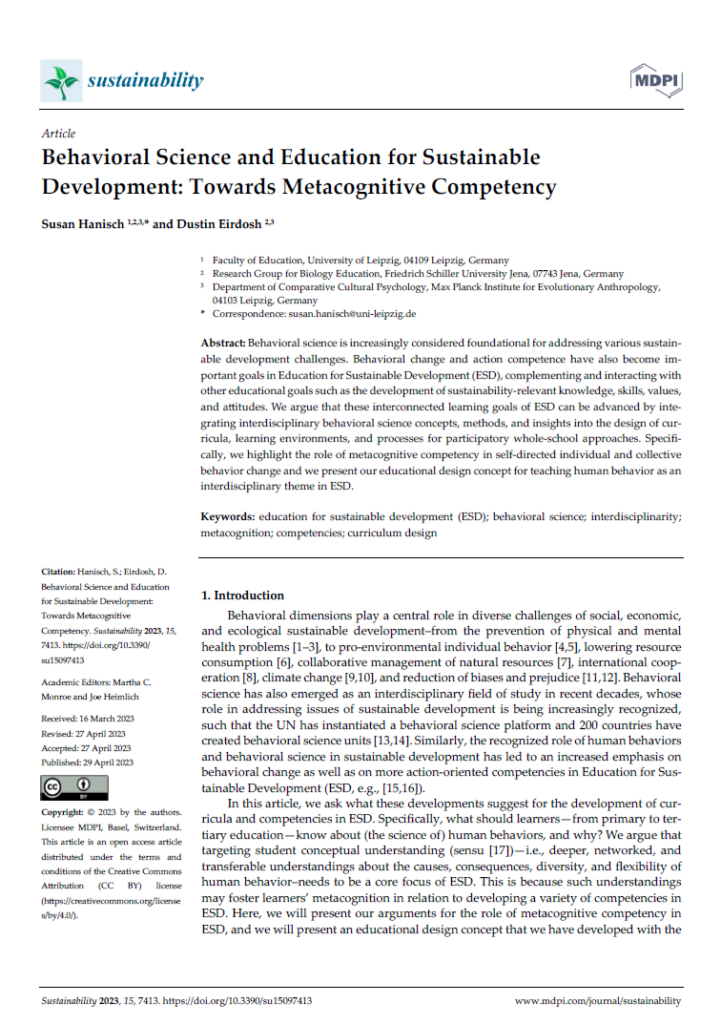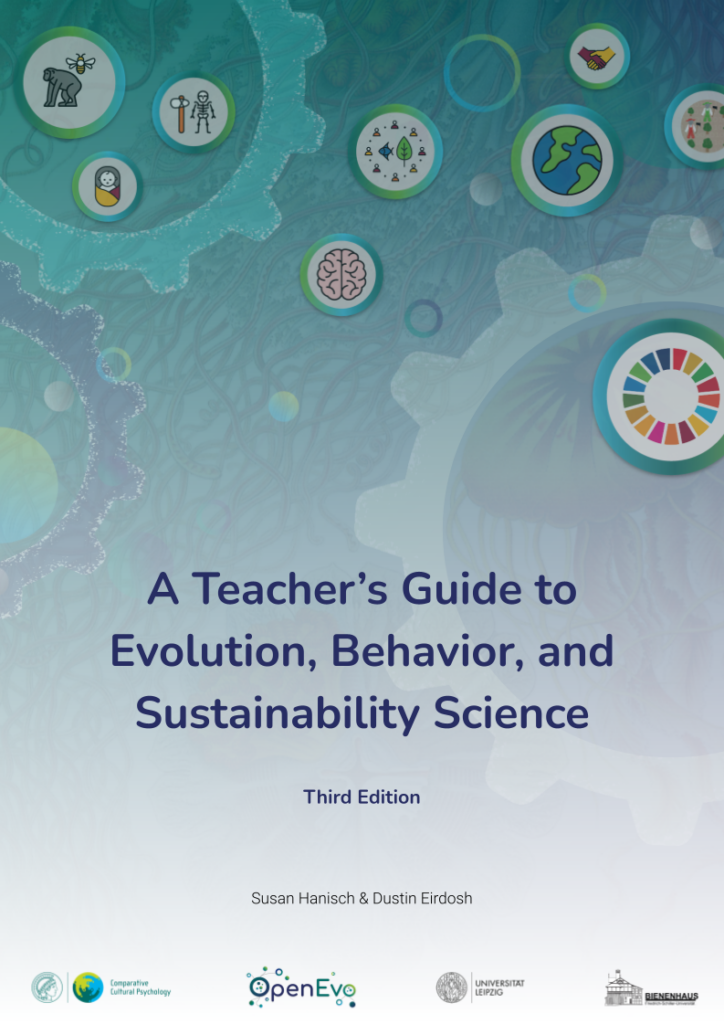Educational Design Concept
“Reflecting on the everyday experience of human behavior
in the light of evolution and sustainability”
The research questions, concepts, methods and findings of evolutionary anthropology, behavioral science, psychology, and sustainability science offer unique opportunities to explore the causes and consequences of human behavior in the classroom.
In this context, these domains of human understanding can contribute to a fascinating and interdisciplinary education that connects to our shared everyday experience, and is relevant to pressing societal challenges. Still, to achieve a deeper understanding of the nature of human behavior and sustainability, isolated lessons are not enough. Rather, we need to work on several levels, including on the level of units and the curriculum as a whole.
Our educational design concept aims to help students and teachers develop the skills to reflect on the causes and consequences of everyday human behaviors, and transfer these competencies to their own lives as well as to diverse issues of well-being and sustainable development.
Selected publications
Explore our peer-reviewed education article in Sustainability, and our more accessible Teacher’s Guide
For teachers, our design concept aims to offer practical guidance for the development of teaching materials, lessons and units. We recomend begining with the Teacher’s Guide linked above. We also offer a brief summary of design concept elements below.
Learning Goals
With our educational design work we join many other initiatives that aim to promote specific competencies in students and teachers that support the advancement of wellbeing and sustainability in our world.
We hypothesize that the self-directed development of these competencies requires a conceptual understanding and awareness of human behavioral concepts, including of the complex causes and consequences of human behaviors.
The OpenEvo approach to education therefore focuses on promoting the knowledge and skills underlying these competencies by drawing on concepts, methods, and insights of the interdisciplinary behavioral sciences.
Design Principles
Building on educational best practices, our experience in classrooms, and the inquiry processes of evolution and behavioral sciences, we have outlined three overarching principles for the identification of content and methods that help reflect on the everyday experience of human behavior in the light of evolution and sustainability.
These three design principles also help orient educators to the ‘big picture’ conceptual relationships that connect evolution, behavior, and sustainability science.
Focus on the aspects and everyday experience of human behaviors relevant to human well-being and sustainable development (eg, prosociality, cooperation, sense of belonging, trust, curiosity and creativity, learning and teaching, empathy and compassion, sense of fairness, perspective taking, flexibility, self-control, goals and values, well-being). Focusing on human behaviors helps students relate to and understand the causes of biological and societal phenomena.
Explore and reflect on the many causes and consequences of human behavior and on the complex causal relationships in human evolution, behavior, and social-ecological systems: How do immediate internal and external factors, individual development as well as cultural and evolutionary history function as causes of human behavior? Why do these mechanisms and patterns of behavior exist compared to other possibilities? What consequences do behaviors have for individuals and their environment, in the short-term and in the long-term? Diverse teaching tools such as causal maps and payoff matrices help in reflecting on these questions. Exploring complex causality helps students understand and relate causal factors in the emergence of human behaviors and evaluate solutions to problems.
Ensure students can transfer their conceptual understanding to novel phenomena, everyday experiences, and relevant problems of sustainable development across multiple scales and contexts of global society, with the help of analogies, analogy maps, and other teaching tools. Teaching for transfer requires the iterative exploration of diverse human behaviors and contexts.
Content Anchors
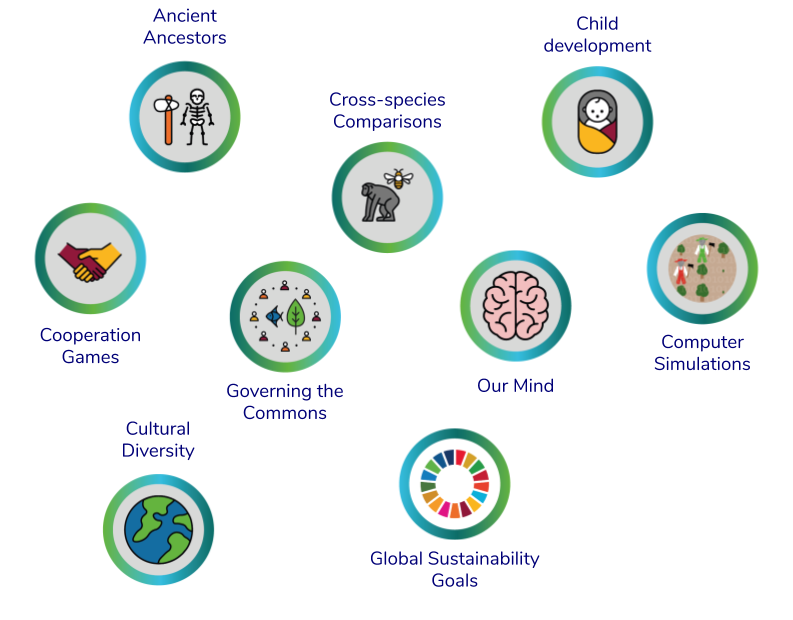
Understanding human evolution, behavior, and sustainability requires students to draw on knowledge and concepts from diverse areas of science, society, and their own experience.
Cross-cutting content anchors reflect the methods and fields of inquiry of evolutionary anthropology, behavioral and sustainability science. From these, we identify content for the development of educational materials that can be used to reflect and discuss the causes and consequences of human behavior in the classroom.
Thinking Tools
Thinking tools are used across diverse lessons to develop the skills that evolutionary anthropologists, behavioral and sustainability scientists use in exploring the causes and consequences of human behavior, and the complex relationships in social-ecological systems.
Using these tools across content also promotes transfer of learning across themes in evolution, behavior, and sustainability science.

Analogy mapping
Analogy mapping is a tool for thinking about similarities and differences between different concepts or phenomena.
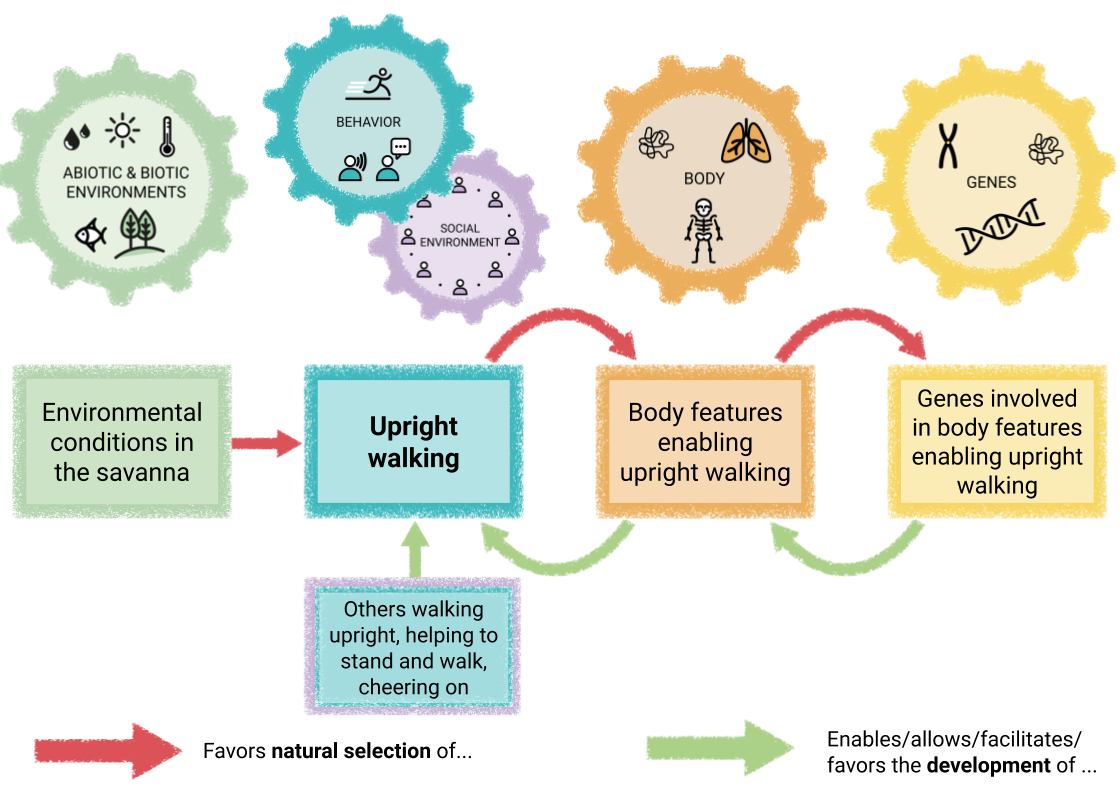
Causal mapping
Causal mapping helps us reflect on the interdependent relationships within complex systems
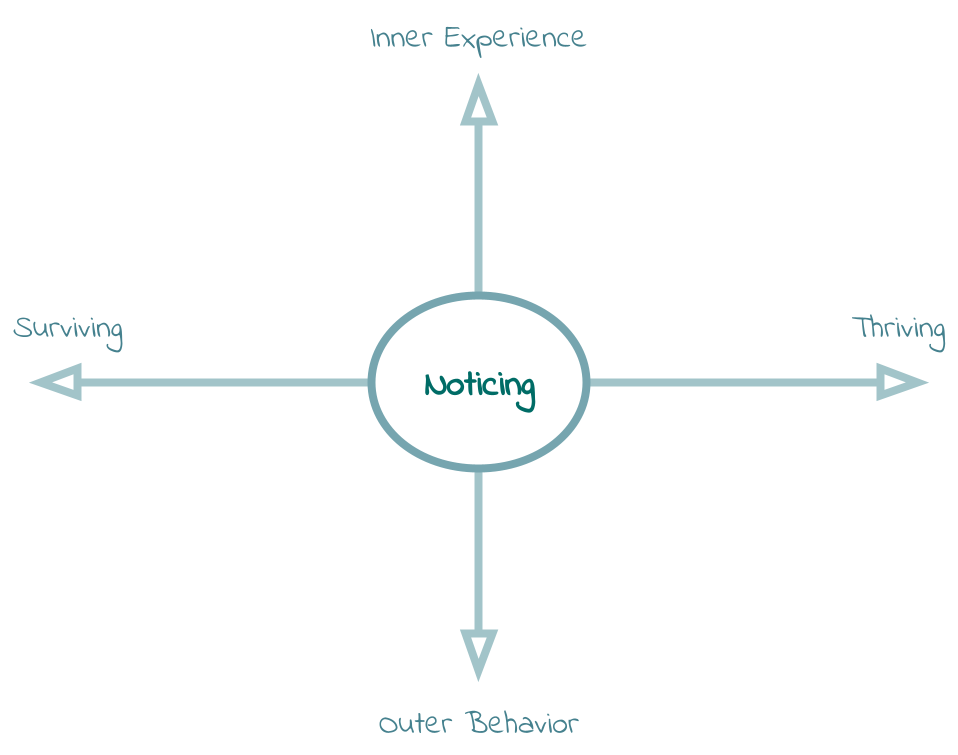
Noticing Tool
The Noticing Tool helps us be aware of and interpret our experiences and behaviors in the present and to orient our behaviors towards valued living.
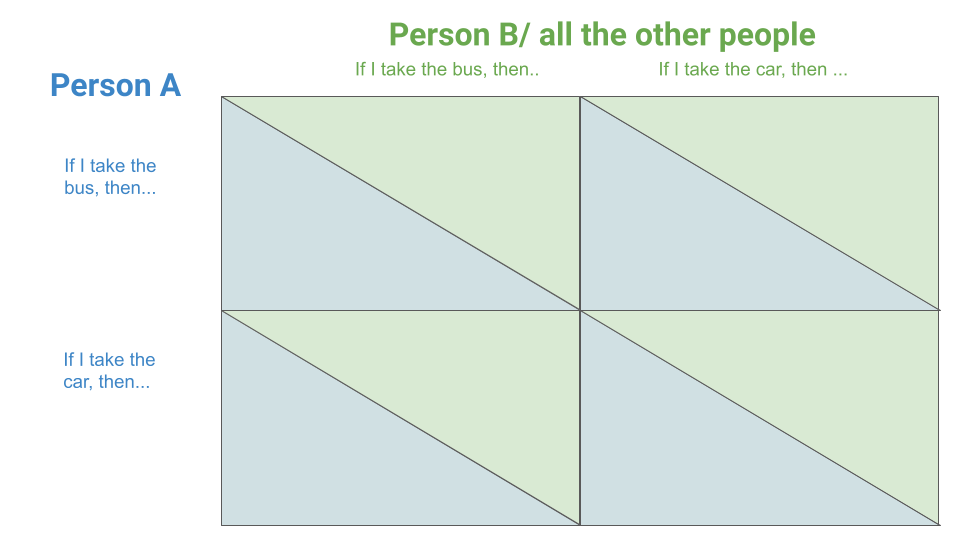
Payoff matrices
Payoff matrices can help us analyze the behavioral strategies and possible outcomes in diverse situations across biology and society.

Structure of Knowledge Diagrams
Simple diagrams can help us map and understand the structures of knowledge in our world.
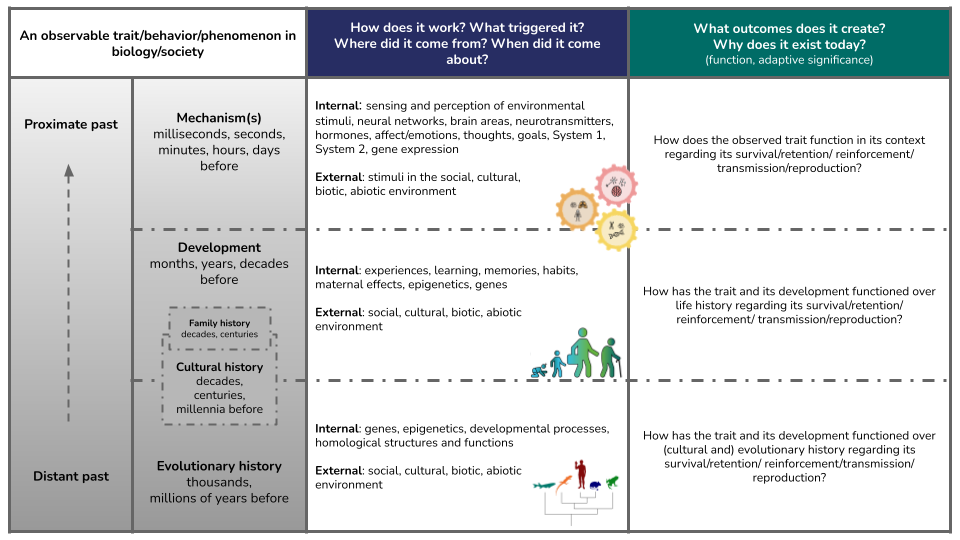
Tinbergen’s Questions
Tinbergen’s Questions can help organize complex causality of behaviors and other phenomena across time.
Pedagogical Approaches
We strive to integrate best pedagogical practices from a range of schools of thought into the design of lesson materials and curricula, and aim to support educators in using a variety of approaches and perspectives in their own educational design work.
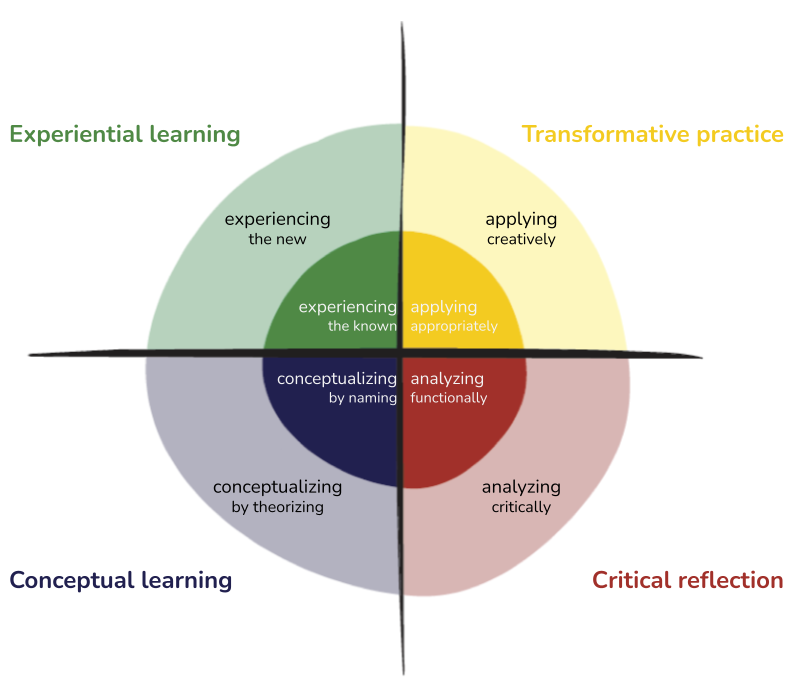
Image source: adapted from Cope & Kalantzis (2020),
https://newlearningonline.com/learning-by-design/pedagogy

Learn more and collaborate with us!
The big picture design concept we have been developing across Global ESD and OpenEvo over the years provides a highly general, and therefore, flexible space for generating new pedagogical innovations and empowering learning environments for students and researchers of all ages. We welcome interested students, teachers, and researchers from around the world to contribute to this growing area of educational design research. Learn more about our Theory of School Improvement, our Design-Based Research Model, and the approaches within our Community Science Lab.

